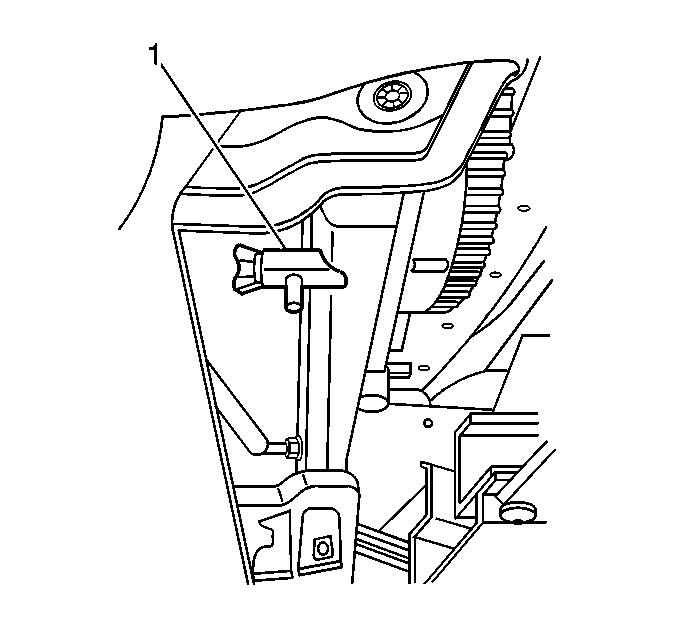- The cooling system has been filled (by the manufacturer) with coolant that is a 50/50 mixture of water and ethylene glycol antifreeze. This coolant solution provides freezing protection to -36°C (-33°F).
- Remove the radiator cap.
- Start the engine. Run the engine for 15 minutes.
- Stop the engine and open the drain plug (1) on the radiator. Drain the coolant into a container.
- Close the drain plug (1).
- Fill the radiator to the base of the radiator filler neck with a 50/50 mixture of ethylene glycol coolant GM P/N 1052753 (Canadian P/N 993089), or equivalent, and water.
- Fill the coolant reservoir up to the FULL mark on the reservoir.
- Install the reservoir cap on the reservoir and align the marks (1) on the cap and the reservoir.
- Install the reservoir hose to the reservoir cap.
- Run the engine until the coolant is at running temperature - when both hoses feel warm and the coolant is moving in the radiator.
- Add coolant as necessary to the radiator until the coolant reaches the radiator filler neck.
- Install the radiator cap.
- Check the following for any signs of leaks:
- Tighten any loose connections as necessary.
Caution: Under some conditions, the ethylene glycol engine coolant is combustible. In order to help avoid being burned, do not spill the antifreeze or the coolant on the exhaust system or the hot engine parts.
Caution: Do not remove the radiator cap when the radiator is warm. Removing the cap immediately lowers the boiling point of the coolant, and could cause a violent overflow, resulting in a large coolant loss and personal injury.
Notice: Alcohol, methanol-based coolants or plain water alone should not be used in the cooling system at any time. Damage to the cooling system could result from their use.
Important:
• Maintain cooling system protection at -36°C (-33°F)
to ensure protection against corrosion and loss of coolant from boiling.
This level of protection should be maintained even if extreme temperatures
are not expected. • Add ethylene glycol-based coolant to the coolant reservoir when
the coolant level is low or to provide added protection against freezing
temperatures lower than -36°C (-33°F).

Important: Dispose of used coolant in a coolant holding tank which is picked up along with used oil. NEVER POUR USED COOLANT DOWN THE DRAIN. Ethylene glycol antifreeze is a very toxic chemical. Do not dispose of ethylene glycol antifreeze into the sewer system or ground water.
| • | The radiator |
| • | The coolant reservoir |
| • | All of the coolant pipe and hose connections |
